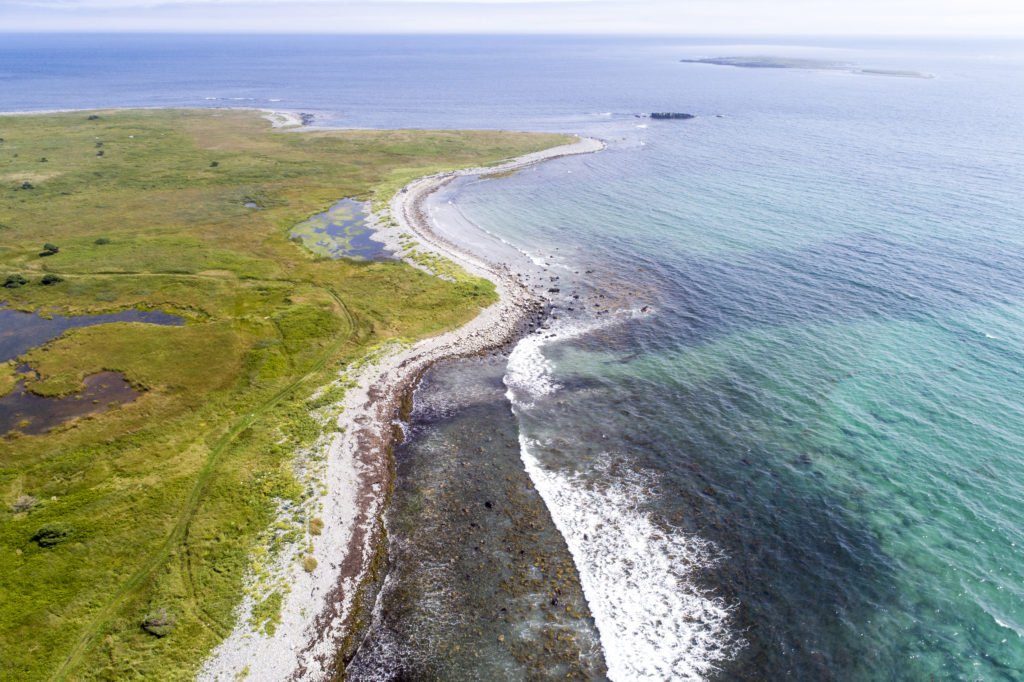Nature Trust and Acadia protect internationally significant bird sanctuary
07 Sep 2013

At a conservation celebration today in Little Harbour, Shelburne County, Acadia University and the Nature Trust signed a conservation easement that will protect forever, a 320 acre coastal wilderness at Hemeon’s Head, Shelburne County.
The ecologically rich site encompasses an extensive coastal ecosystem including internationally significant habitat for birds. The new protected area makes an important contribution to coastal conservation in a province where a mere 5% of the coast is protected. It is also a rare good news story for bird conservation at a time when bird populations around the world face serious decline.
The newly designated Hemeon’s Head Conservation Lands include three kilometres of uninterrupted sand and cobble beach, sand dunes, coastal headland, tidal marshes, sandflats and mudflats, an extensive lagoon, freshwater wetland, bogs, barrens and coastal forest. They support a rich diversity of plants and wildlife.
The site is part of an internationally designated Important Bird Area, recognised for its significance for nesting, breeding and migratory birds. It provides critical habitat for several rare and endangered species, including Harlequin ducks, Red knots and Piping plovers. With so few plover nesting sites left in Nova Scotia, their habitat at Hemeon’s Head is essential to survival of the species.
Protection of such a valuable natural sanctuary for birds, especially critical habitat for many migratory birds, is welcome news for international bird conservation at a time when bird populations face significant decreases in Canada and worldwide, primarily as a result of habitat loss.
Hemeon’s Head is the second major achievement in a ground-breaking conservation partnership between Acadia University and the Nature Trust. A year ago today the two organisations made conservation history when they signed the first conservation easement in Canada protecting university lands, an agreement preserving the 300 acre Bon Portage Island.
Bonnie Sutherland, the Nature Trust’s Executive Director, commended Acadia’s leadership in environmental stewardship. She said, “Acadia University is an environmental pioneer among academic institutions in Canada. By permanently protecting its own ecologically important lands through conservation easements, Acadia is raising the bar on land stewardship for other academic institutions across the country and beyond.”
Tom Herman, Vice President Academic of Acadia University was delighted with the signing of Acadia’s second conservation easement, noting, “Partnering with the Nature Trust makes it possible for Acadia, as owners of important natural areas, to make a tangible and lasting contribution to biodiversity conservation in Nova Scotia. The conservation easement protects these lands, their conservation values, and their irreplaceable research and educational values, in perpetuity, something landowners cannot do on their own.”
The new protected area was also welcome news to many in the local community who have enjoyed this wildlife-rich coastal wilderness for generations.
With increasing subdivision, development and loss of traditional access to coastal areas all across Nova Scotia, and with over 85% of the coast in private ownership, Nova Scotians are increasingly concerned about the future of the coast.
Yet Sutherland is optimistic. “Together with visionary landowners like Acadia and enthusiastic local communities and conservation partners, we are already making exciting headway in coastal conservation. More and more Nova Scotians recognise that private land conservation is critical if we want to protect our unique coastal legacy. With their support, we can achieve even more.”
